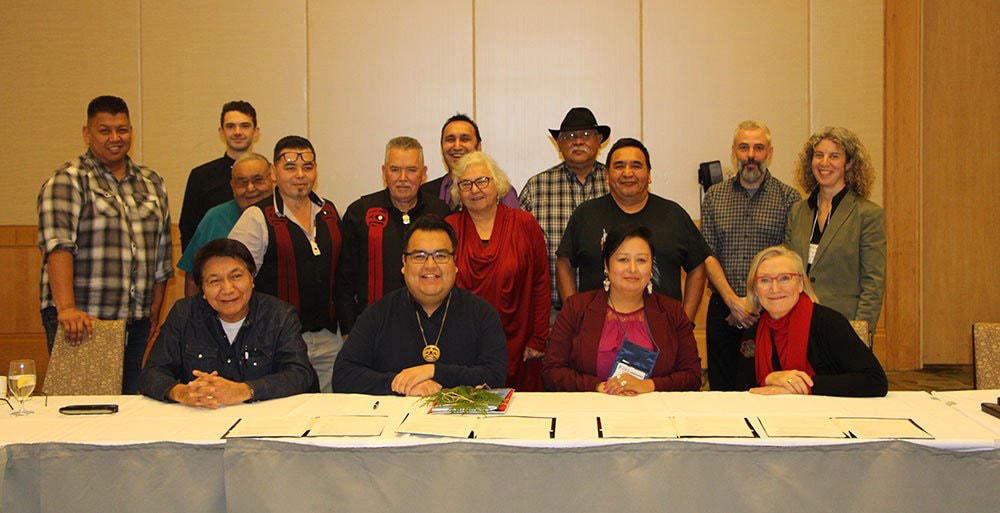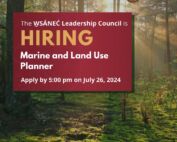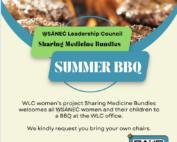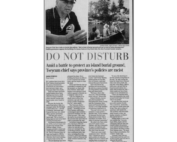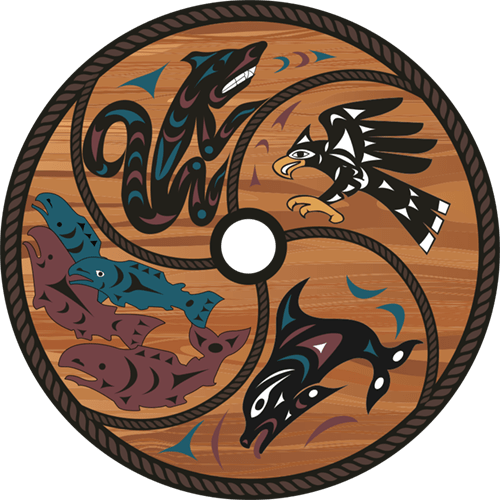You asked, we answered.
We are committed to transparency and accountability to the communities we serve. We noticed many of you had similar questions and concerns about our community engagement sessions, the transfer of SISȻENEM (Halibut Island) to the WLC and our role as it relates to band operations and significant infrastructure projects, such as the Keating Overpass.
We hope to answer these questions with the answers below. If not, please feel free to give us feedback so we can improve.
What is the role of WLC?
The WLC does not exist to replace or take over the role of Chief and Council, nor does it manage band operations. Instead, it acts as a unifying body that takes on projects and portfolios the member bands specifically allocate to the council. View the WLC’s mandate, here
Individual band Councils can choose to delegate issues that affect all of our communities to the W̱SÁNEĆ Leadership Council, to make sure that we have a coordinated W̱SÁNEĆ approach.
By utilizing the WLC to facilitate inter-band cooperation and communication, each band can better focus on internal operations.
By acting as a united body, we are better positioned to:
- Act together to address core territorial concerns
- Rebuild our W̱SÁNEĆ Nation with projects such as the reef net fishery
- Ensure opportunities are fairly distributed among Tsartlip, Tseycum and Tsawout.
Why isn’t the WLC involved in projects like the Keating Overpass?
The WLC only works on the very specific projects and portfolios that all three member bands have delegated to the WLC. The organization does not unilaterally take on projects without being assigned the projects by member band representatives–or the member bands themselves–that sit at the WLC. The WLC then adheres to specific protocols that ensure unity and maintain cooperation.
As such, the only way the WLC would be involved in a project like the Keating Overpass is if all three member bands received referral requests, and then decided to allocate this project to the WLC to manage.
Evaluating large infrastructure development projects like these at the expense of individual bands requires significant resources. This is why the WLC is currently working on a referrals process and building a dedicated referrals office to better handle these types of large projects within the territory and ensure all First Nations have access to information and are aware of the work of the other First Nations.
Despite the ÁLI SĆȺ (good work) done so far, and the work planned in the future, there is much progress to be made in this area. In many cases, colonial governments will ask for a response and feedback on these large projects within 30 days, which is not enough time to thoroughly evaluate the impact on the territory, let alone coordinate the work of all three First Nations that are members of the WLC.
What is the WLC doing to protect W̱SÁNEĆ people, during covid?
Because the WLC is a not-for-profit society, not a band office, it doesn’t qualify for, nor receive emergency funding. The WLC only works on specific issues that are outside the scope of band operations. Health is the concern of each individual community and the WLC hasn’t been asked by the member bands to do anything specific with respect to addressing COVID. As a result, the WLC does not provide the same level of detailed recommendations, funding and resources that band offices have when it comes to managing COVID.
Even so, the W̱SÁNEĆ Leadership Council has taken the following measures to protect W̱SÁNEĆ people:
- Commissioned and distributed protective W̱SÁNEĆ face masks to each band office.
- Ensuring all operations are COVID friendly, such as closing the physical office and conducting all business remotely using online video conferencing.
- Maintaining current operations in spite of the state of emergency – cultural, art, language, elder, youth and environmental committees are still operating on their specific projects and portfolios.
- Organizing and hosting additional events to develop the health and wellbeing of community members such as women’s circles, hunting trips, celebrations of culture and community engagement sessions.
- In addition to these additional events, the WLC has currently applied for funding to develop sessions that protect community members against the negative mental health implications of the pandemic while promoting W̱SÁNEĆ culture. The initiatives included in the application include:
- Support for coping with the challenges of living within COVID-19 and the feelings of disconnection that have resulted.
- Increasing the sense of unity within our Nations, fostering nationhood, empowering the voice of women in our community, and creating a safe space for women to gather, converse, and collaborate on activities and events.
- Hosting more regular opportunities and fostering the development of healthy relations among community and family across W̱SÁNEĆ and thus promoting nationhood during these hard times.
Why have the community engagement sessions held so far been so small?
Community engagement sessions are intended to identify the shared W̱SÁNEĆ vision for the future.
One of the barriers to success in this endeavor is that some community members are hesitant to share their perspectives, having been conditioned by colonialism to believe their opinion doesn’t matter. This hesitation can be exacerbated in large groups or where there is a possibility of conflict. Another consideration impacting our outcomes are the different experiences within each community. The issues we hope to address impact each community differently. In order to obtain and encourage full participation from each W̱SÁNEĆ community member, we felt it was important to begin the sessions with smaller groups hosted within each of the three member communities, prior to hosting larger sessions. This means that while individuals may experience smaller groups, there are many engagement sessions happening concurrently, and together they represent a larger amount of people.
Another reason the groups are so small is that we are just beginning the sessions. Our hope is each attendee will come back to future sessions and bring at least one relative or friend.
Why isn’t leadership present during community engagement sessions?
There is sometimes a lack of trust between communities and Chief and Council. In order for community members to feel comfortable opening up and sharing honestly, we felt it was important to provide a safe space just for community members that did not include the political element.
Once the findings from the community engagement sessions have been gathered, the findings will be presented to leadership along with recommendations for action.
How did WLC attain an island for W̱SÁNEĆ and what happens now?
Part of the WLC’s mandate is to promote respect for W̱SÁNEĆ culture, traditional practices, and language, including the original W̱SÁNEĆ management of the environment as it was meant to be. The WLC seeks to promote sustainable and equitable development of resources within W̱SÁNEĆ Territory.
Accordingly, the return of land to W̱SÁNEĆ people, specifically that of SISȻENEM (Halibut Island) was a project the WLC had pursued after discussions with leadership from each W̱SÁNEĆ Leadership Council member First Nation. The direction received was to create a Land Trust that would be able to hold land on behalf of Tsartlip, Tsawout, and Tseycum. SISȻENEM, once transferred by TLC to this Land Trust, would be the joint property of all three First Nations and would be for the good of the entire community. As land conservation becomes more important with climate change and municipal growth, the transfer of the SISȻENEM to the WLC is just the first of many steps to return the land to the W̱SÁNEĆ people.
To stay up to date on developments on this story and others, please sign up for our newsletter
How are we doing?
Your feedback is important to us. Please let us know how we’re doing by filling out a quick survey, here.
RECENT POSTS
How are we doing?
The W̱SÁNEĆ Leadership Council acts as a unifying body that takes on projects and portfolios the member bands specifically allocate to the council.


